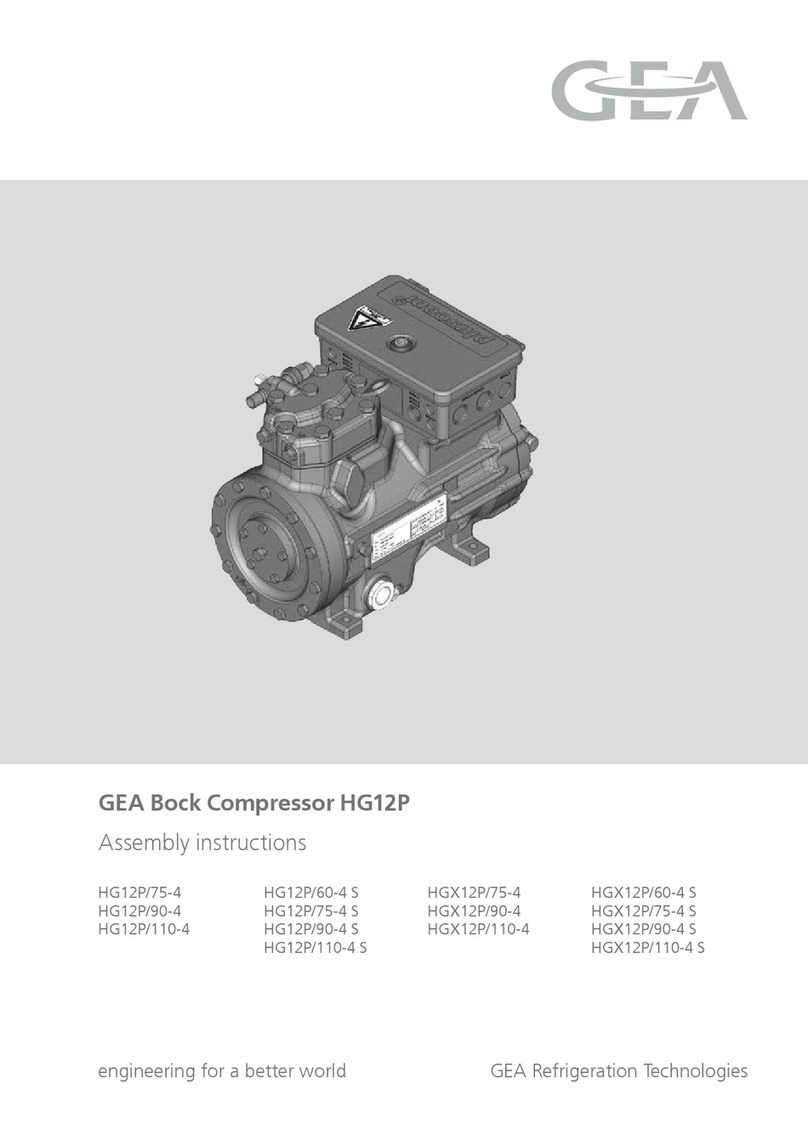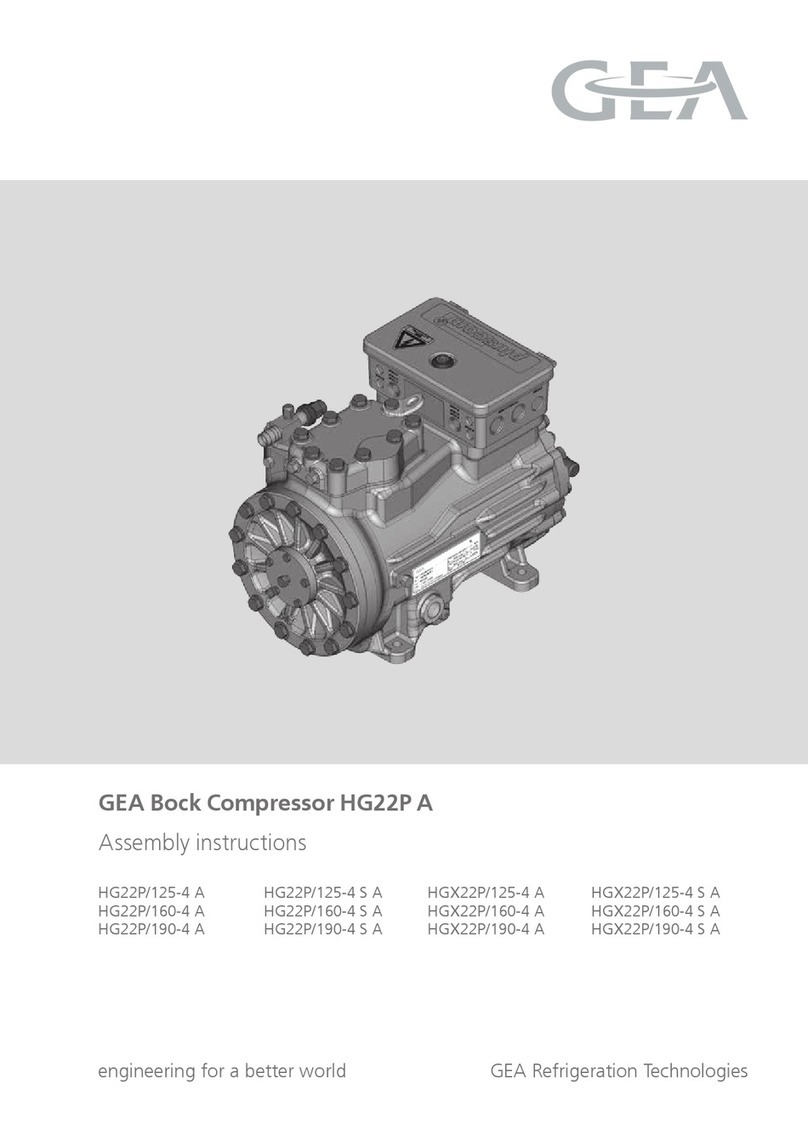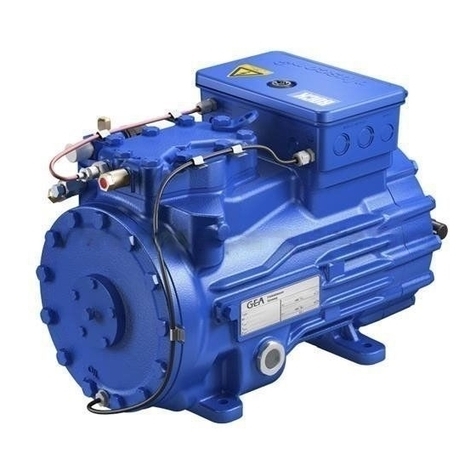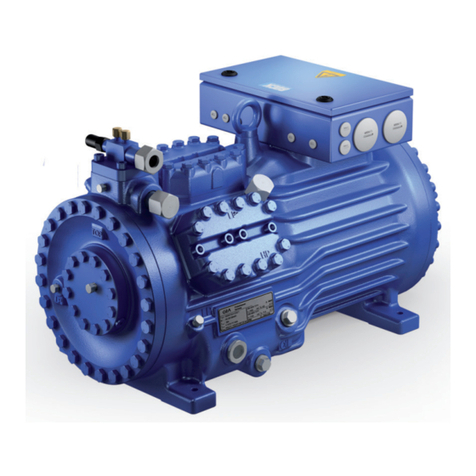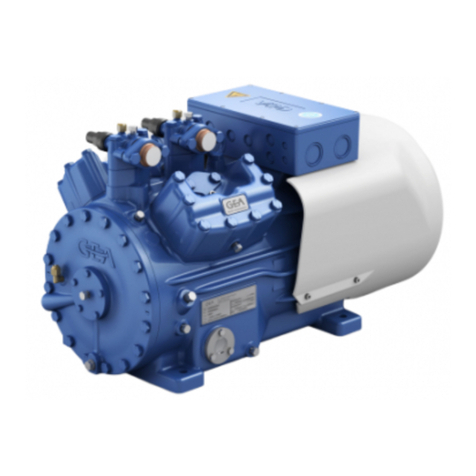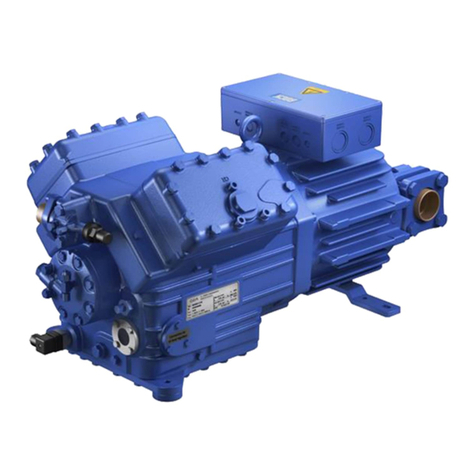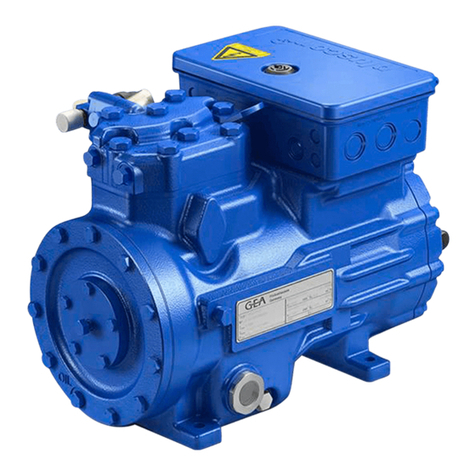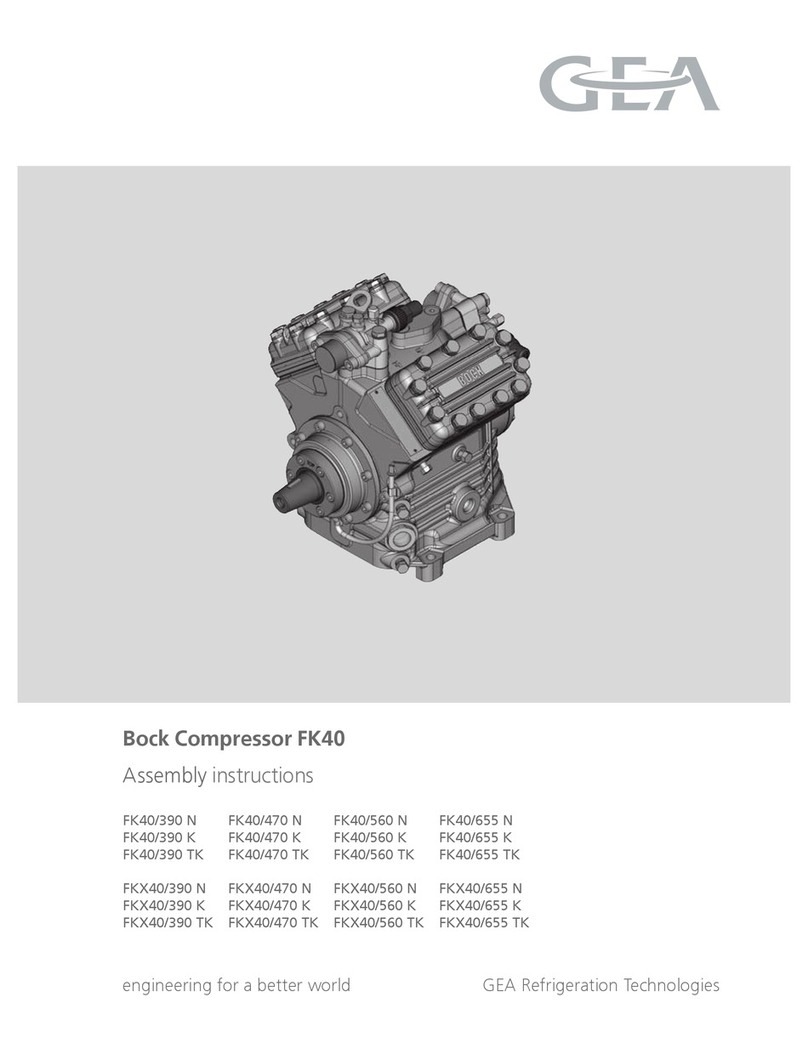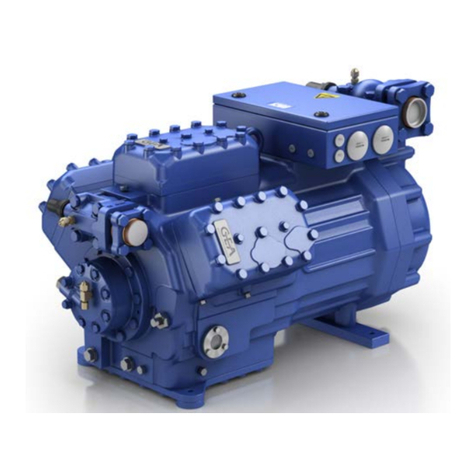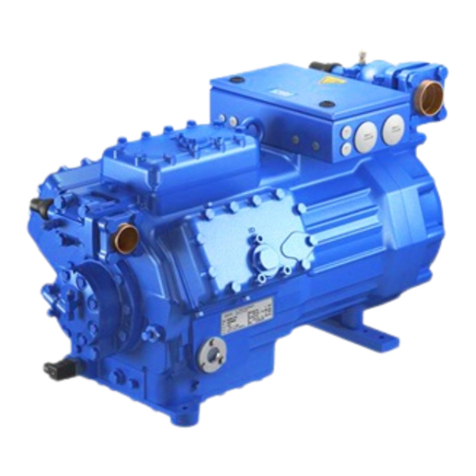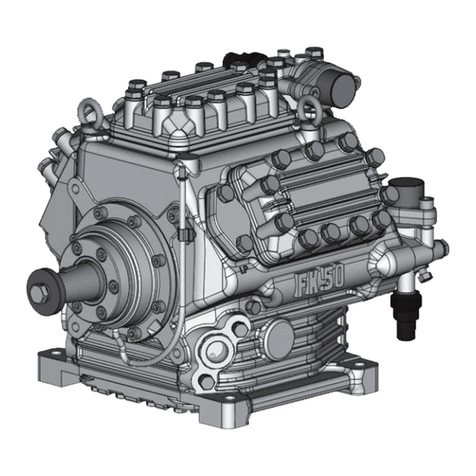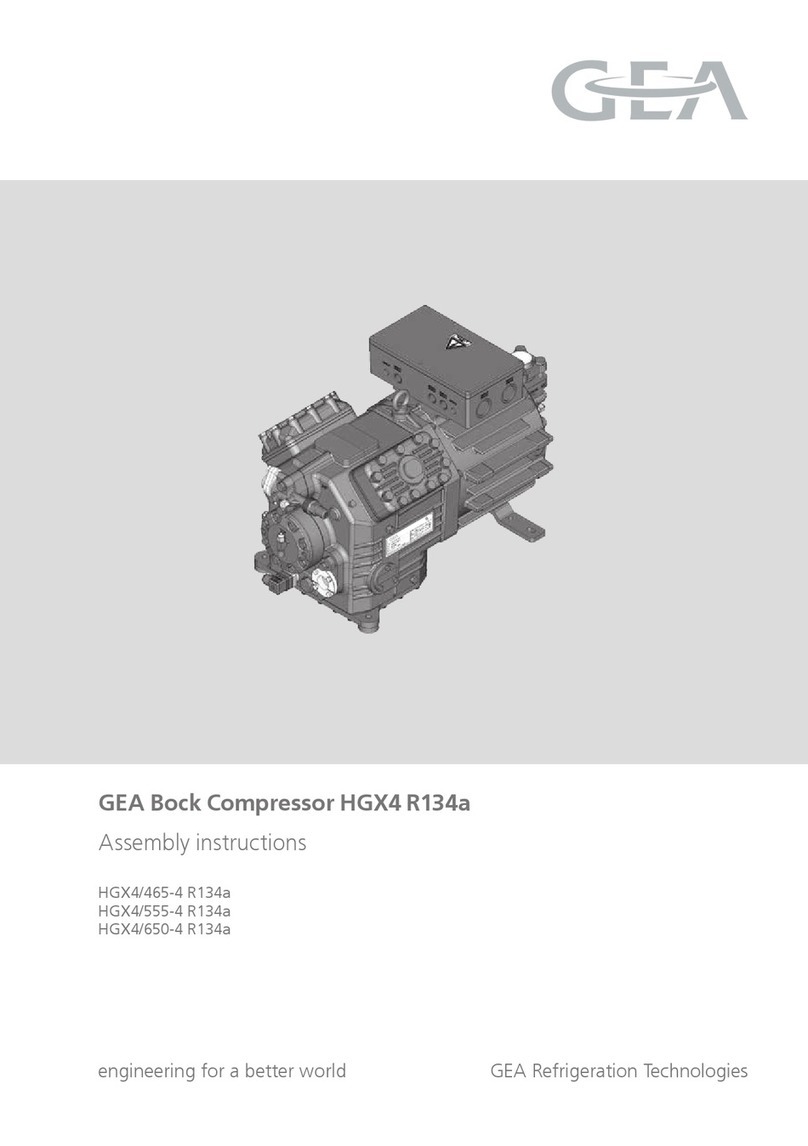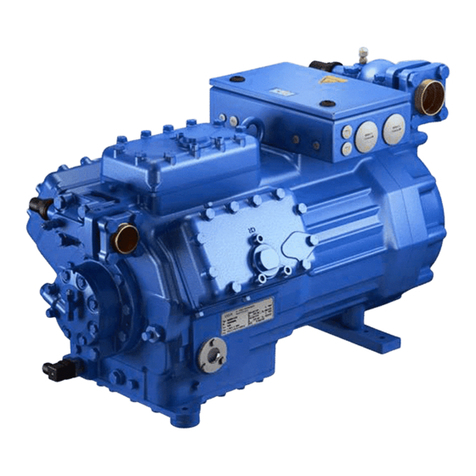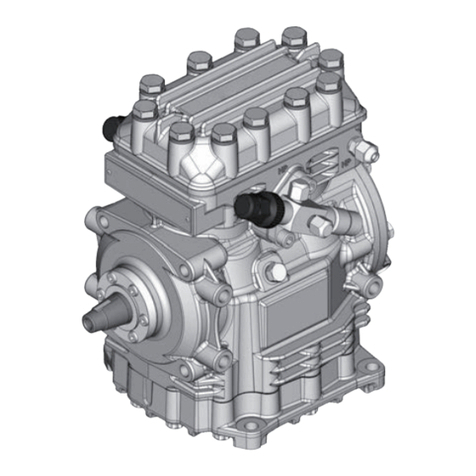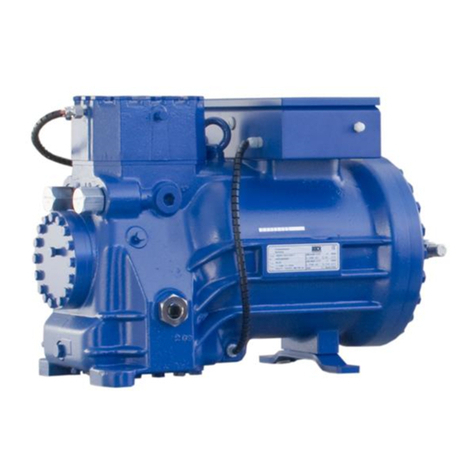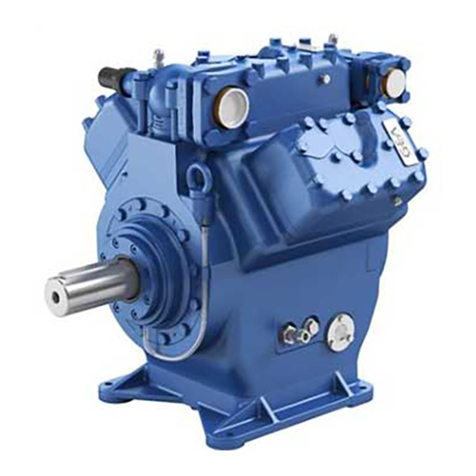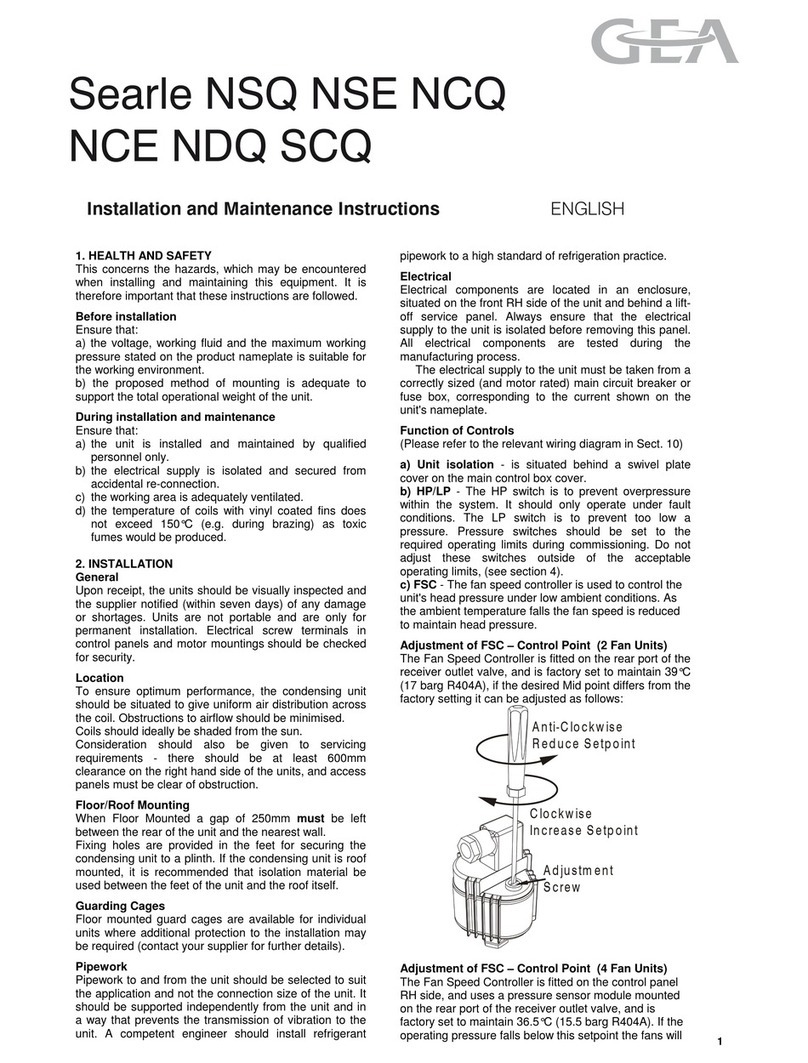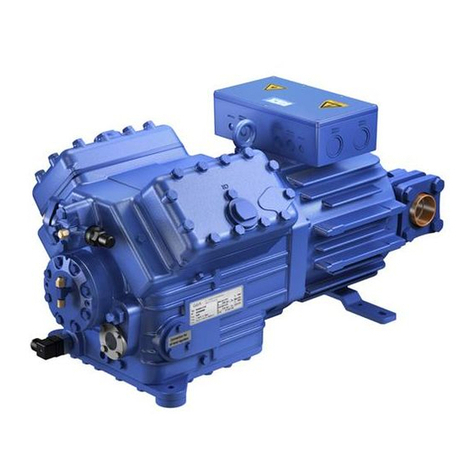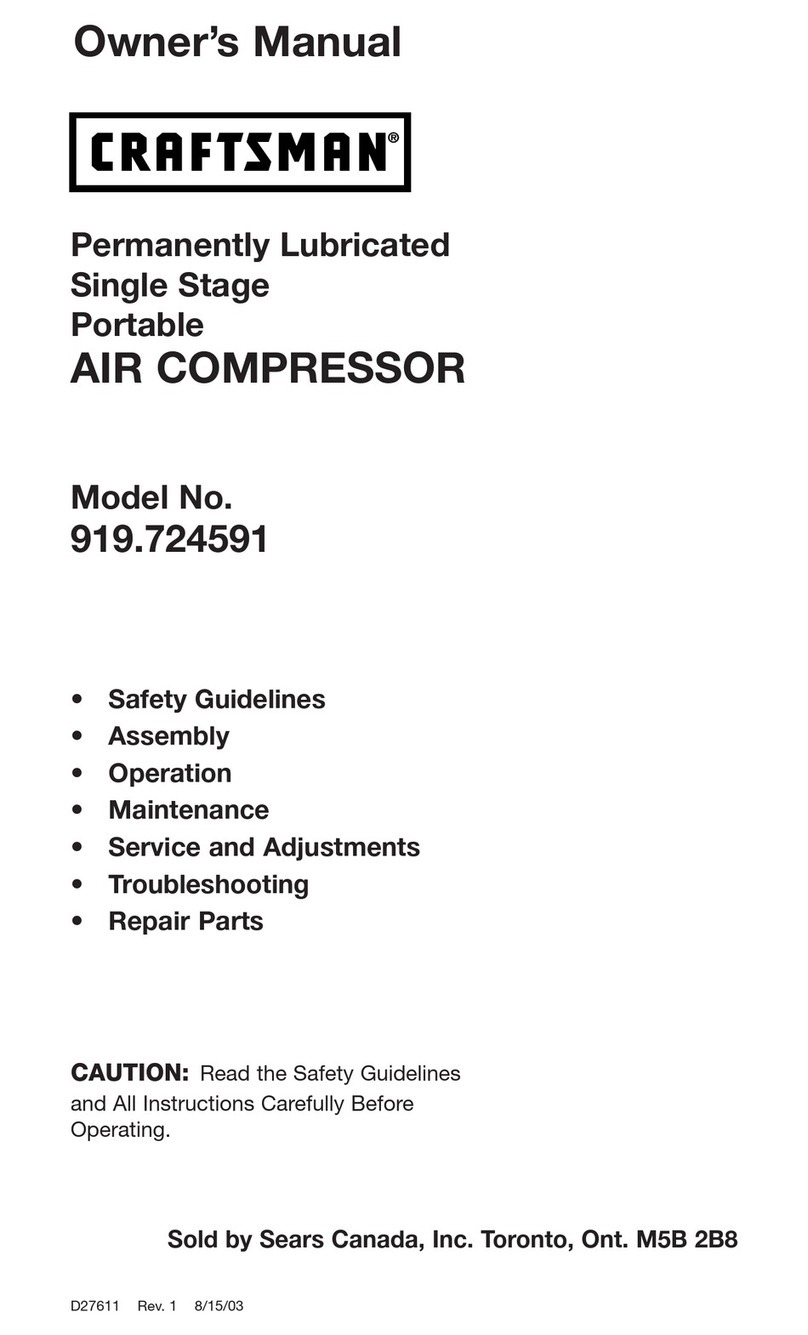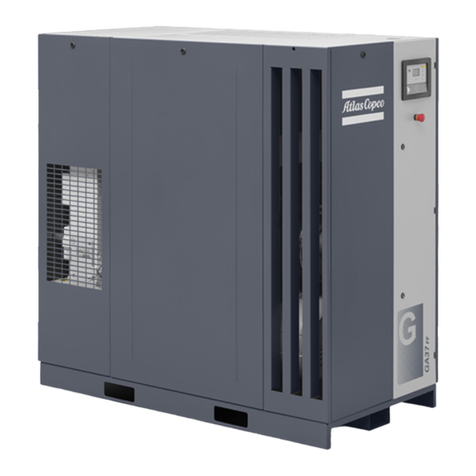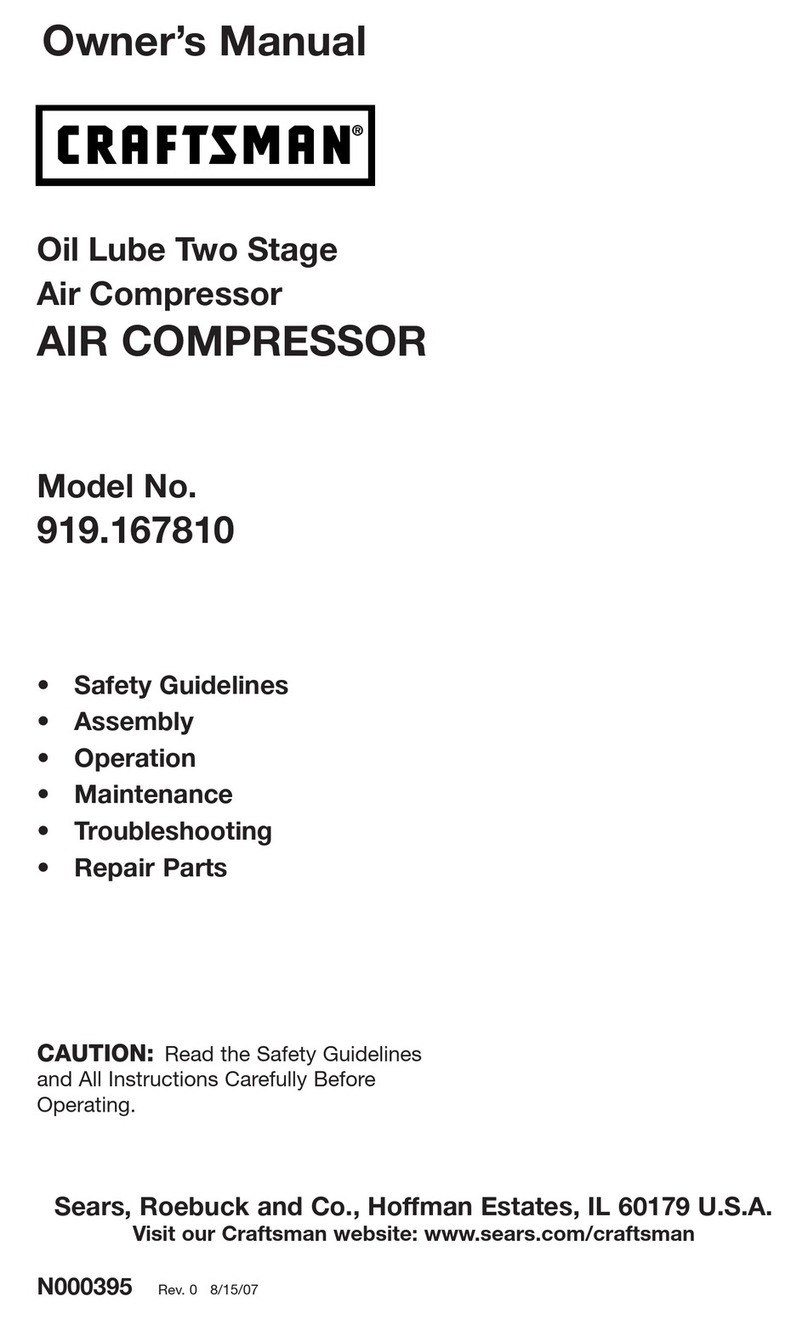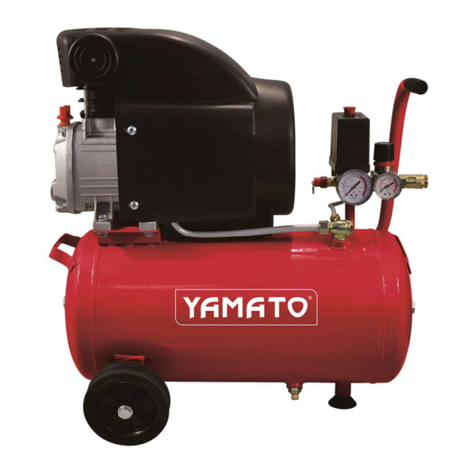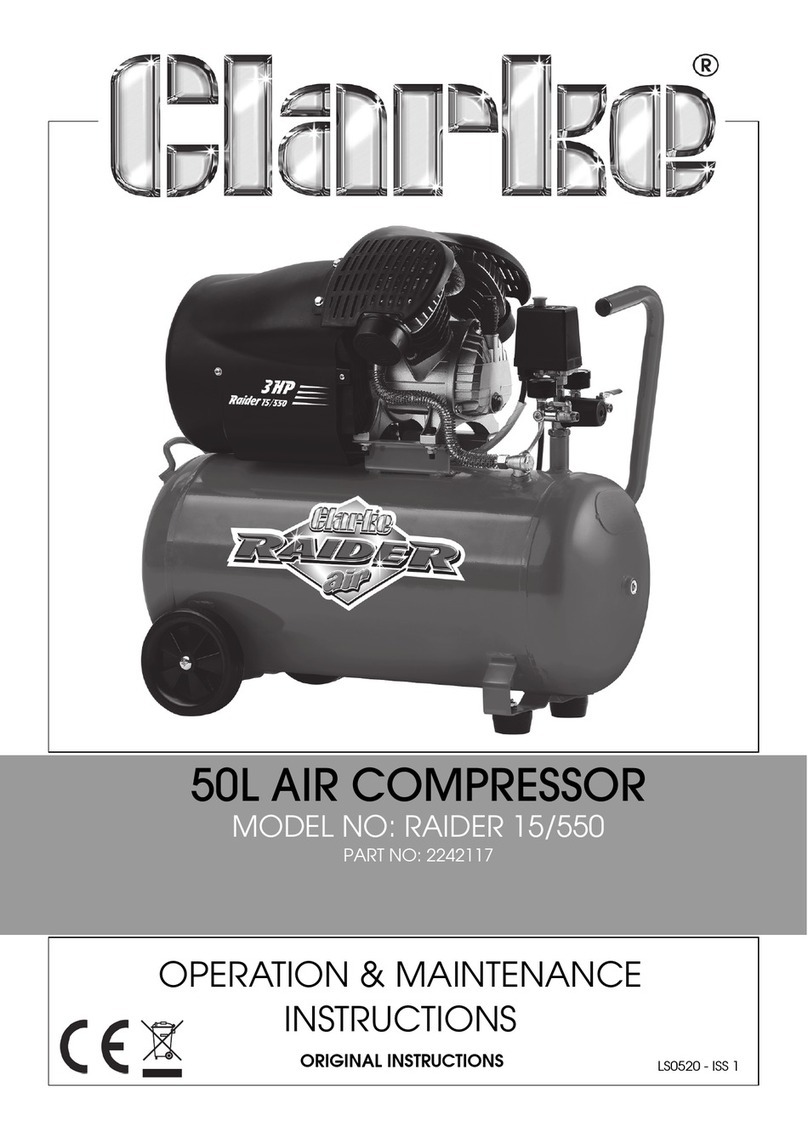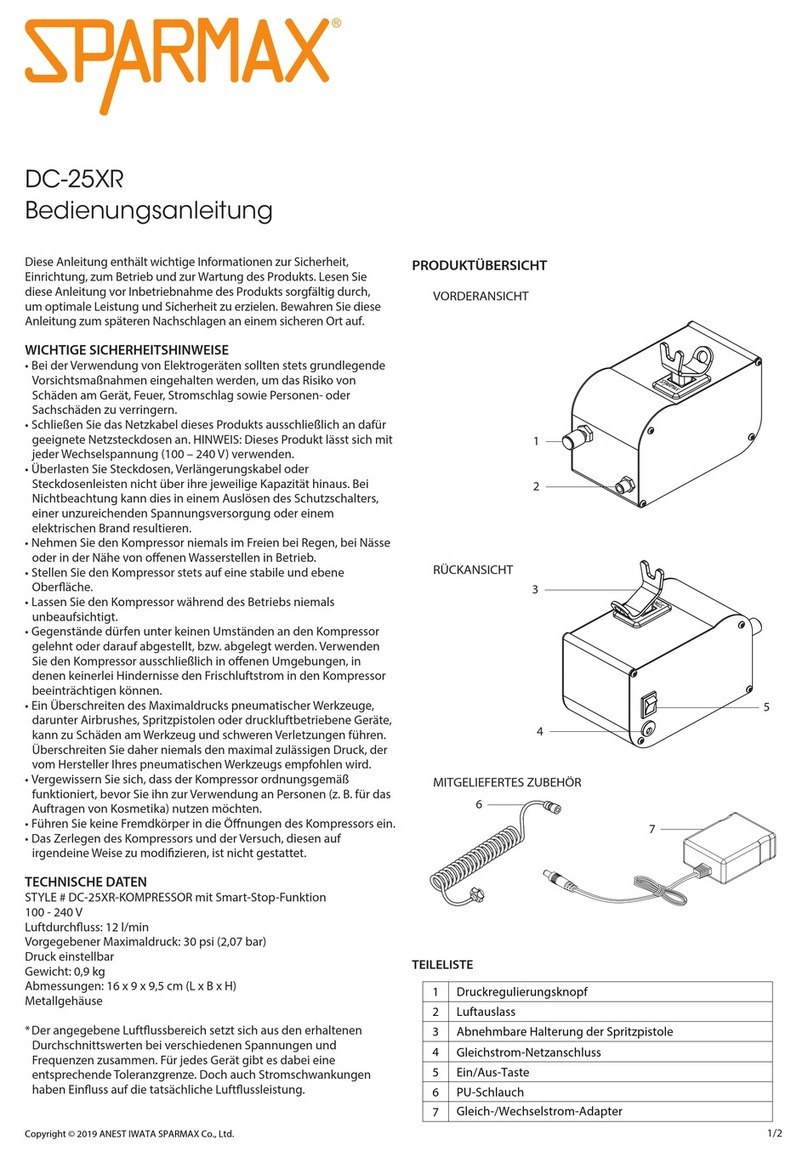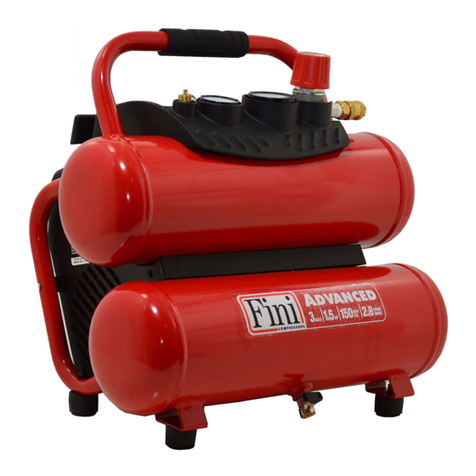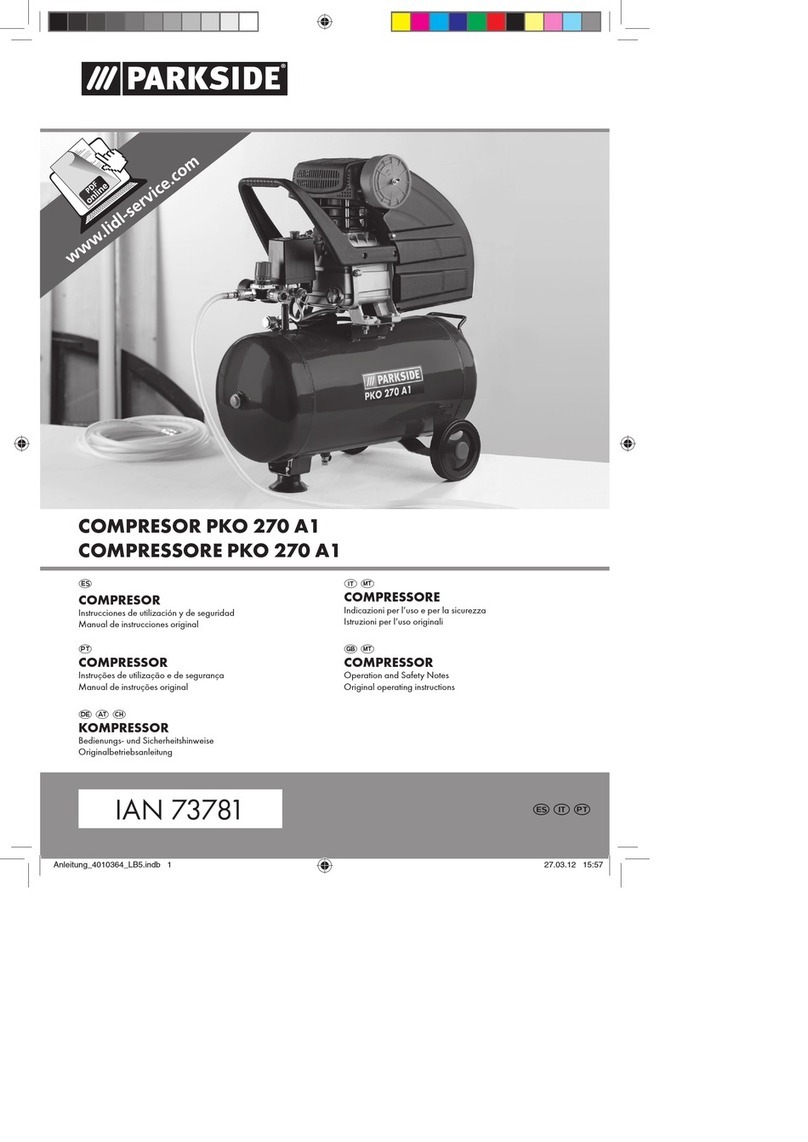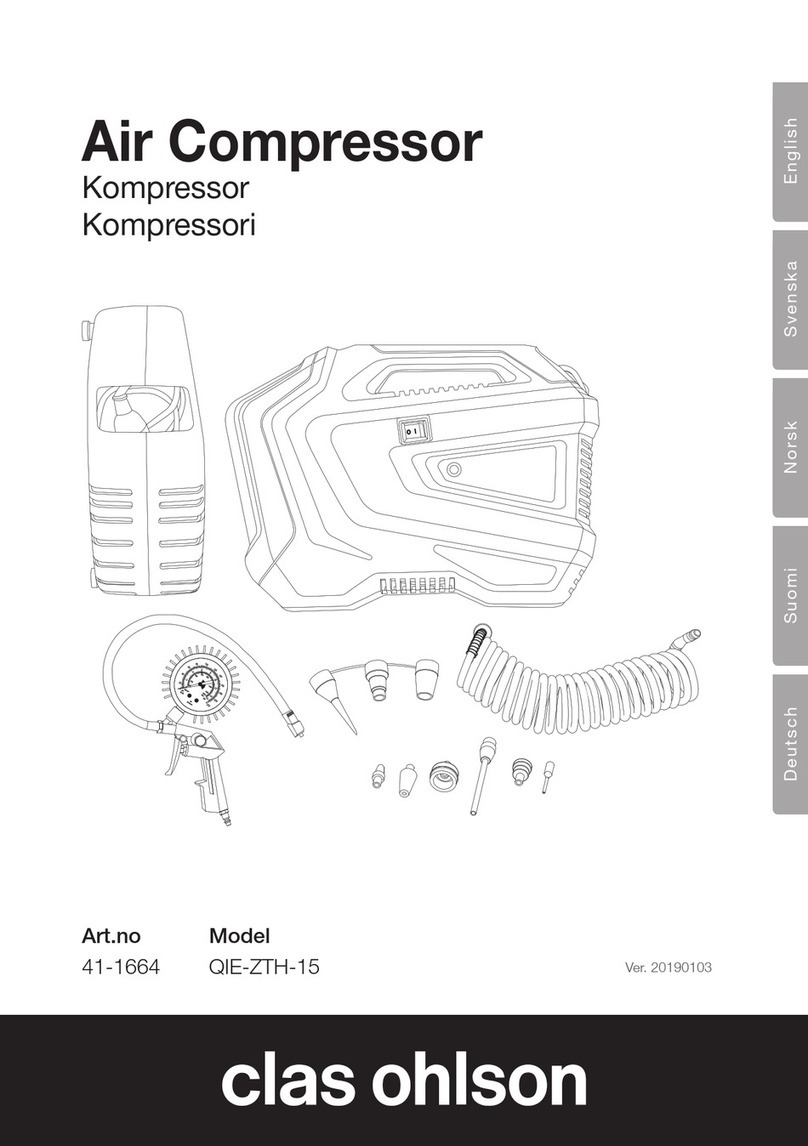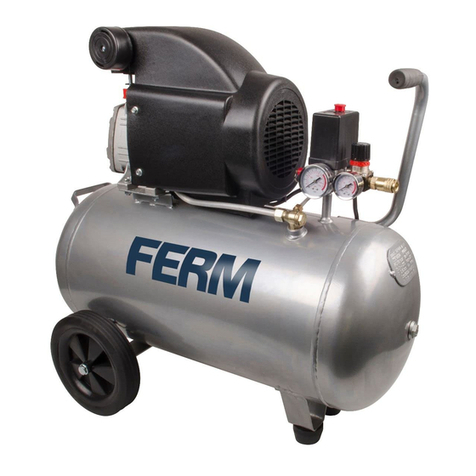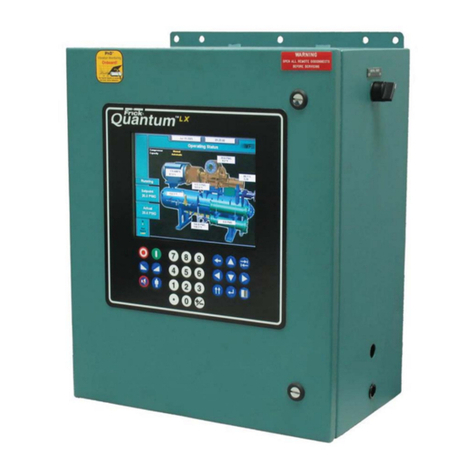
SUBJECT ................................................................................................................................................ See page:
1. INTRODUCTION .............................................................................................................................. 1.1
2. FUNCTION OF THE COMPRESSOR IN THE REFRI ERATIN PLANT........................................... 2.1
3. TECHNICAL DATA
3.1 General technical data.............................................................................................................. 3.1
3.2 Connections and required free space ...................................................................................... 3.2
3.3 Lubrication data........................................................................................................................ 3.4
4. ENERAL DESCRIPTION OF THE COMPRESSOR
4.1 Compressor housing ................................................................................................................. 4.1
4.2 Cylinders and moving parts...................................................................................................... 4.1
4.3 Rotary shaft seal ....................................................................................................................... 4.2
4.4 Suction and discharge valves.................................................................................................... 4.2
4.5 Valve-lifting mechanism............................................................................................................ 4.3
4.6 Cylinder head cooling ............................................................................................................... 4.3
4.7 Principal connections and suction gas strainer........................................................................ 4.3
4.8 Pressure equalizing line and overflow safety valves ............................................................... 4.3
4.9 Oil pump, filters and control oil system................................................................................... 4.4
4.10 Lubrication system .................................................................................................................. 4.5
5. DESCRIPTION AND OPERATION OF ACCESSORIES
5.1 Pressure gauges ........................................................................................................................ 5.1
5.2 Pressure safety switches ........................................................................................................... 5.1
5.3 Crankcase heating..................................................................................................................... 5.2
5.4 Cylinder head temperature safety device................................................................................ 5.2
5.5 Capacity control
5.5.1 Manually operated capacity control............................................................................... 5.3
5.5.2 Electrically operated capacity control............................................................................. 5.5
5.6 Injection interstage gas cooler ................................................................................................. 5.5
6. OPERATION OF THE COMPRESSOR
6.1 Unloaded starting ..................................................................................................................... 6.1
6.2 Loaded operation of the compressor...................................................................................... 6.1
6.3 Liquid hammer .......................................................................................................................... 6.1
7. STARTIN , STOPPIN AND ADJUSTMENT OF COMPRESSOR
7.1 Starting the compressor ........................................................................................................... 7.1
7.2 Stopping the compressor ......................................................................................................... 7.1
7.3 Setting of the oil pressure regulator........................................................................................ 7.1
7.4 Setting of pressure safety switches.......................................................................................... 7.3
8. PERIODICAL INSPECTIONS OF THE OPERATIN COMPRESSOR
8.1 Survey of periodical inspections (Check list)............................................................................ 8.1
8.2 Explanation to the survey of periodical inspections ............................................................... 8.2
9. COMPRESSOR MAINTENANCE
9.1 Maintenance schedule.............................................................................................................. 9.1
9.2 Lubrication data........................................................................................................................ 9.1
9.3 Topping up oil with compressor operating............................................................................. 9.1
9.4 Evacuation of compressor ........................................................................................................ 9.2
9.5 Draining and change of oil....................................................................................................... 9.2
9.6 Cleaning of oil filters................................................................................................................. 9.2
9.7 Cleaning of the suction gas strainer ........................................................................................9.3
9.8 Dismounting, inspection and reassembly of suction and discharge valves ........................... 9.3
9.9 Compressor purging ................................................................................................................. 9.5
10. FAULT FINDIN TABLE................................................................................................................. 10.1 & ff
Appendix: STANDARD ILLUSTRATED PARTS LIST........................................................................... 1 - 23
Refrigeration Division
rasso
TABLE OF CONTENTS
v002.97.10.en Refrigeration Compressors Series RC9 Page I
